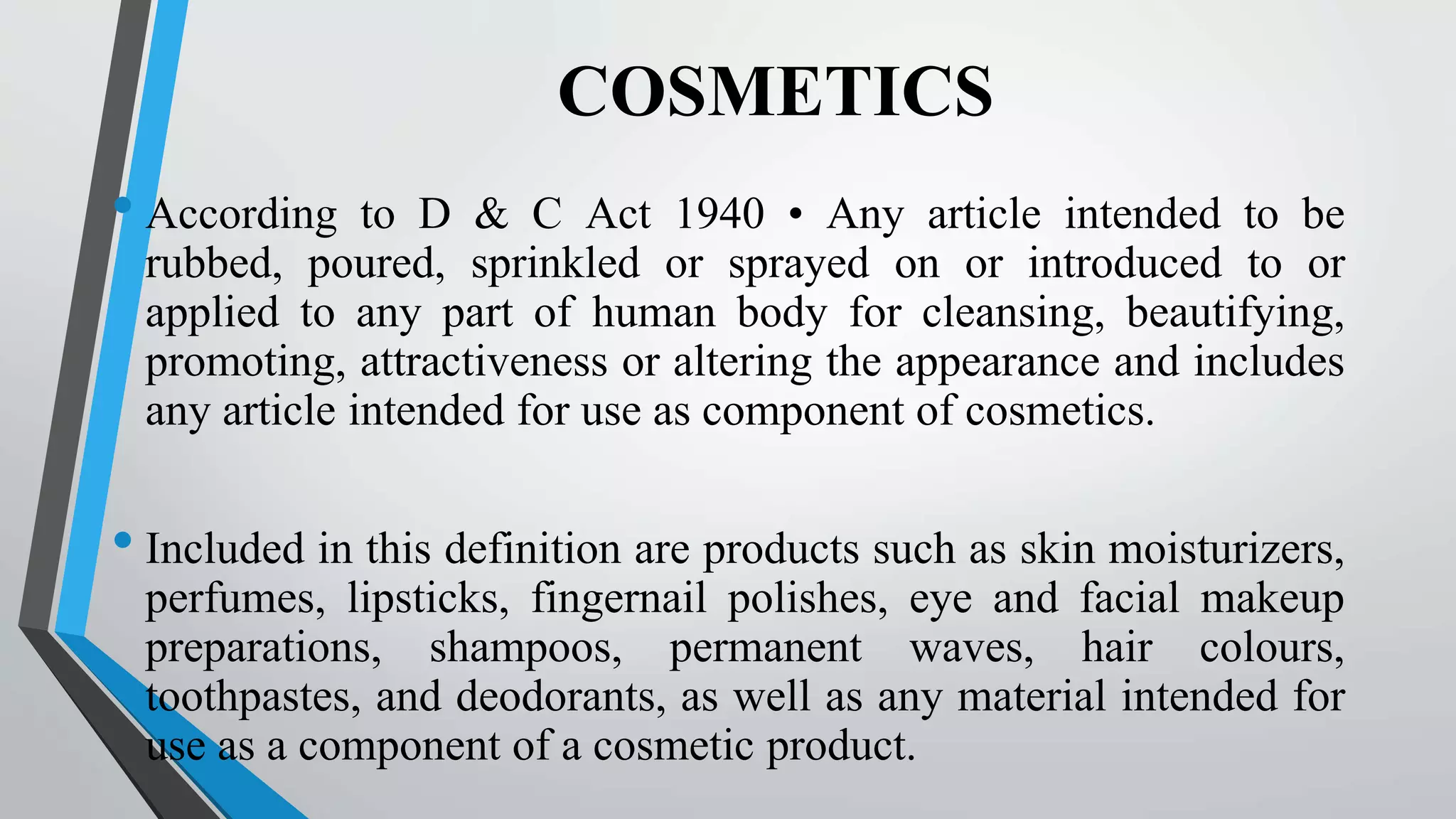Herbal cosmetics have several advantages over synthetic cosmetics, including fewer allergic reactions and side effects since they are natural. However, herbal cosmetics also have some disadvantages like slower effects and difficulties in standardization. This document discusses various herbal cosmetic products for skin, hair, and nails. It describes formulations for herbal creams, oils, and shampoos that use herbs like amla, reetha, and henna. Current challenges in herbal cosmetics include a lack of scientific validation, quality control, and pharmacokinetic studies.





































































![ORIGIN AND PROCESSING OF INGREDIENTS
Ingredients
- Water
- Minerals and ingredients of mineral origin
- Physically processed agro-ingredients
- Chemically processed agro-ingredients
- Other ingredients.
Calculation rules for natural origin percentage
% natural origin of total = [weight of total product – weight of non-
natural origin ingredients (appendix V.1) – weight of petrochemical
moieties (appendix V.3) / weight of all ingredients] x 100.](https://image.slidesharecdn.com/herbalcosmetics-190325025835/75/Herbal-cosmetics-70-2048.jpg)









